
Our study on a male-essential microRNA and the evolution of other dosage compensation mechanisms in birds is now out in Nature! www.nature.com/articles/s41...
16.07.2025 15:23 — 👍 119 🔁 57 💬 10 📌 6@aelek.bsky.social
Postdoc @ Kaessmann and Sasse labs @zmbh.uni-heidelberg.de Previously PhD @ Sebé-Perdós lab @crg.eu Interested in regulatory genomics, evolution, machine learning, and especially the combination of all of the above. https://anamaria.elek.hr/

Our study on a male-essential microRNA and the evolution of other dosage compensation mechanisms in birds is now out in Nature! www.nature.com/articles/s41...
16.07.2025 15:23 — 👍 119 🔁 57 💬 10 📌 6A shout-out to people who made this possible: first and foremost @martaig.bsky.social and @arnausebe.bsky.social, but also @zolotarg.bsky.social @xgrau.bsky.social as well as all the ASP lab members, and of course @lukasmahieu.bsky.social @steinaerts.bsky.social and all the members of LCB in Leuven
06.07.2025 18:14 — 👍 3 🔁 0 💬 0 📌 0We anticipate that applying the same approaches to other species of cnidarians and early-branching animals will enable comparative cell type analyses that will reconstruct evolutionary relationships of the major animal cell types and regulatory processes by which they first evolved.
06.07.2025 18:14 — 👍 1 🔁 0 💬 2 📌 0To wrap up, here we pave the way for moving beyond conventional transcriptome-based cell type characterization in non-model species, by analyzing regulatory traits that define cell type identities in Nematostella, such as CREs sequence motif composition, active TFs, and GRN architecture.
06.07.2025 18:14 — 👍 0 🔁 0 💬 1 📌 0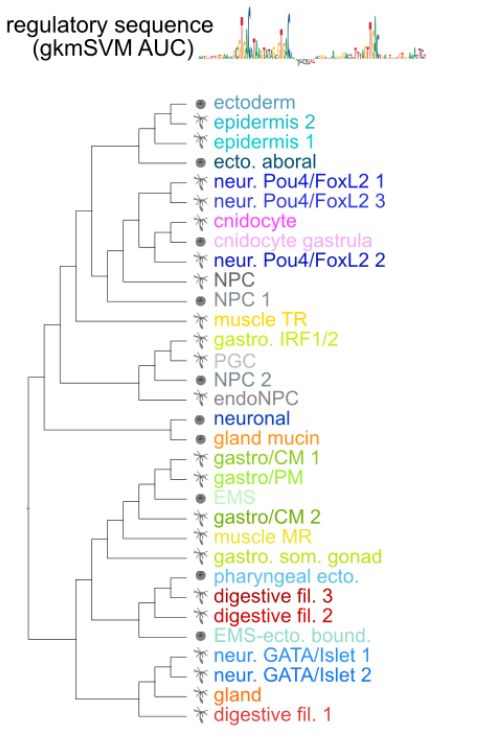
Cell type relationships based on regulatory sequence similarity
We therefore show that effector gene usage groups functionally similar cell types, but regulatory features also reflect their ontogenetic relationships. E.g. GATA/Islet neurons show regulatory seq. similarities with
EMS and pharyngeal derivatives, and Pou4/FoxL2 neurons with ectodermal derivatives.
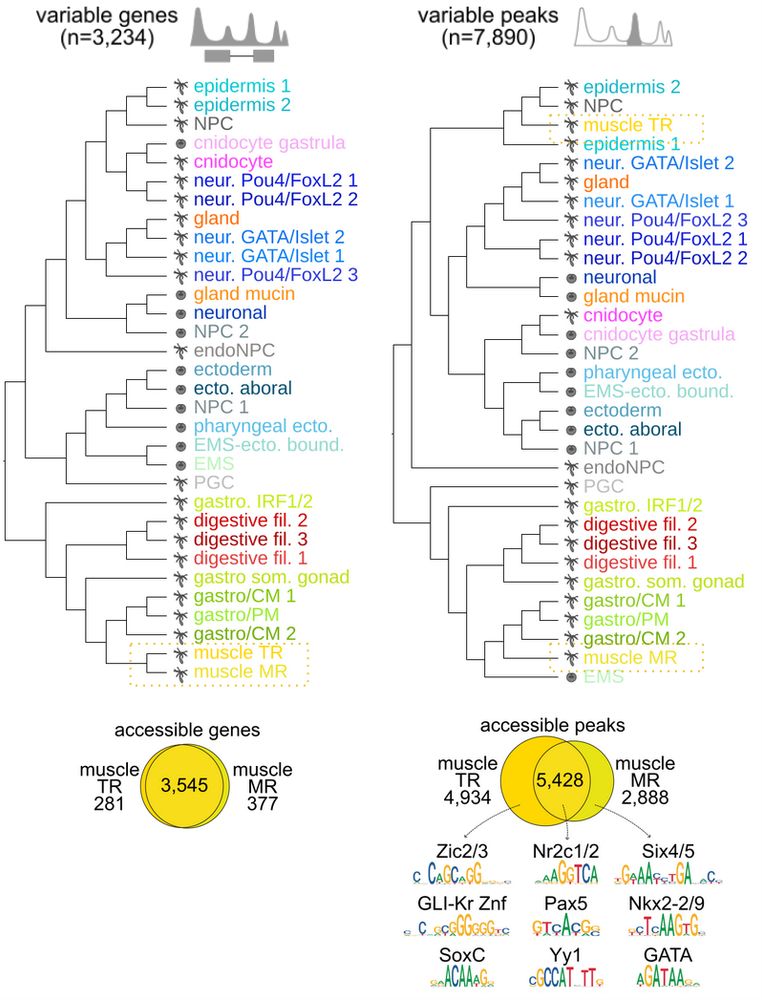
Finally, we explored cell type clustering using different features. We highlight transcriptionally similar retractor muscles, which share many access. genes, but have distinct sets of CREs bound by distinct TFs, and each clusters with the derivatives of their precursors (ecto. for TR and EMS for MR)
06.07.2025 18:14 — 👍 1 🔁 0 💬 1 📌 0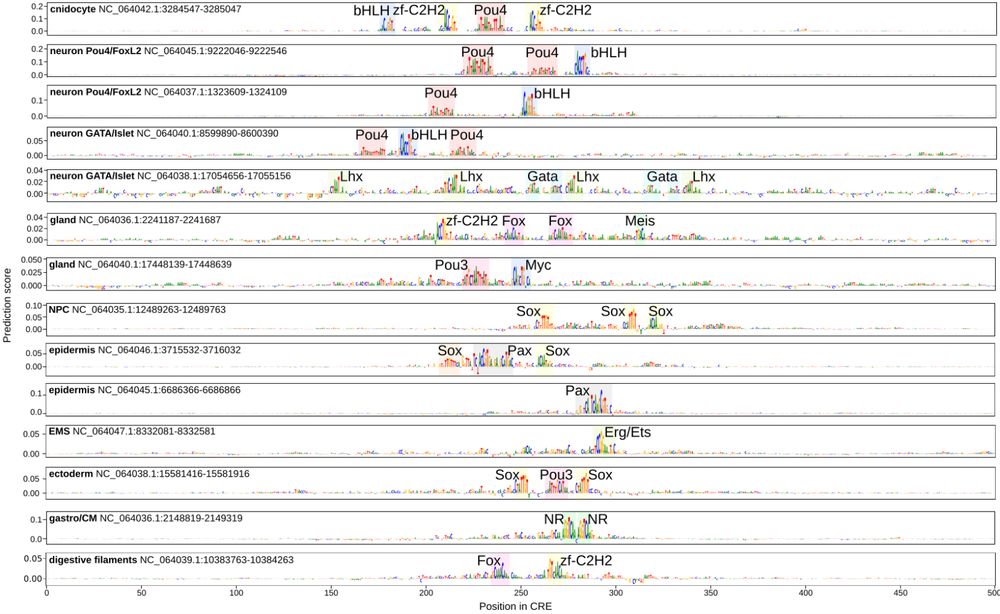
Motifs identified with deep learning in CREs of different cell types.
With invaluable help of @lukasmahieu.bsky.social and @steinaerts.bsky.social lab we trained deep learning sequence models to prioritize motifs predictive of cell type specific accessibility, and to uncover mostly flexible motif syntax in Nematostella, in line with billboard-like model of TF binding.
06.07.2025 18:14 — 👍 0 🔁 0 💬 1 📌 0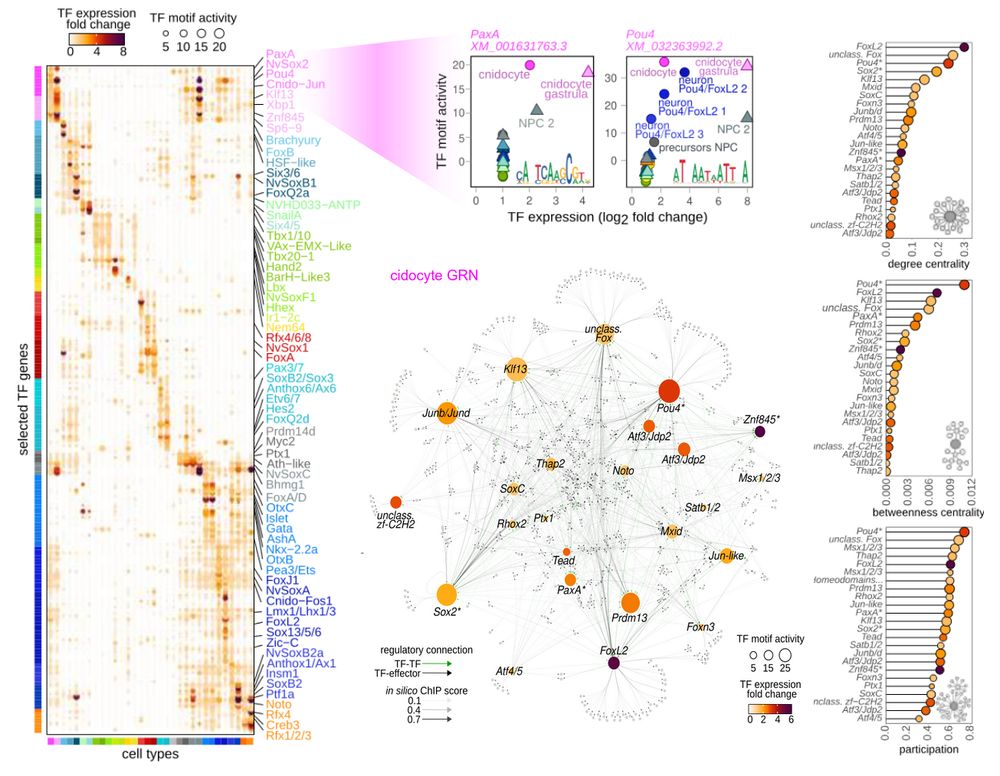
Cnidocyte gene regulatory characterization.
With that in hand, we characterized each cell type by usage of TF motifs, and then linked active TFs to their target genes in cell type specific gene regulatory networks (GRNs). We showcase cnidocyte GRN as an example and highlight important TFs with central roles in the network (FoxL2, Pou4, Sox2).
06.07.2025 18:14 — 👍 0 🔁 0 💬 1 📌 0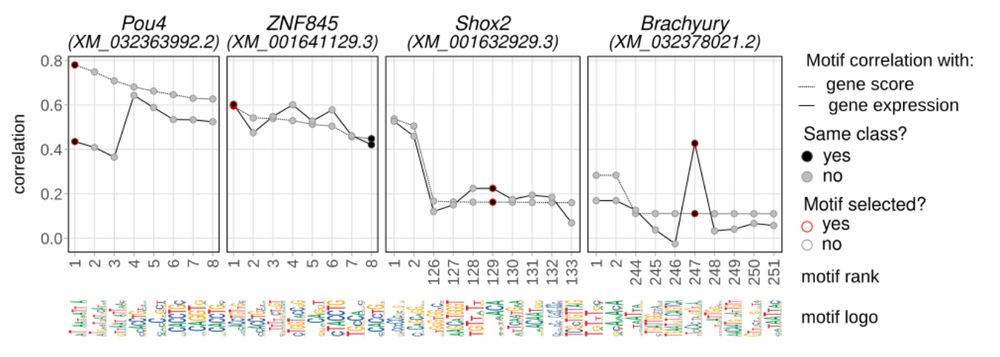
Correlation-based motif assignment approach.
The link between ATAC and RNA - from gene regulatory perspective - are TF binding motifs, which are not known for most Nematostella TFs. We devised a correlation-based approach to assign one motif to each TF, selected as best correlated among all motifs inferred by sequence similarity and orthology.
06.07.2025 18:14 — 👍 1 🔁 0 💬 1 📌 0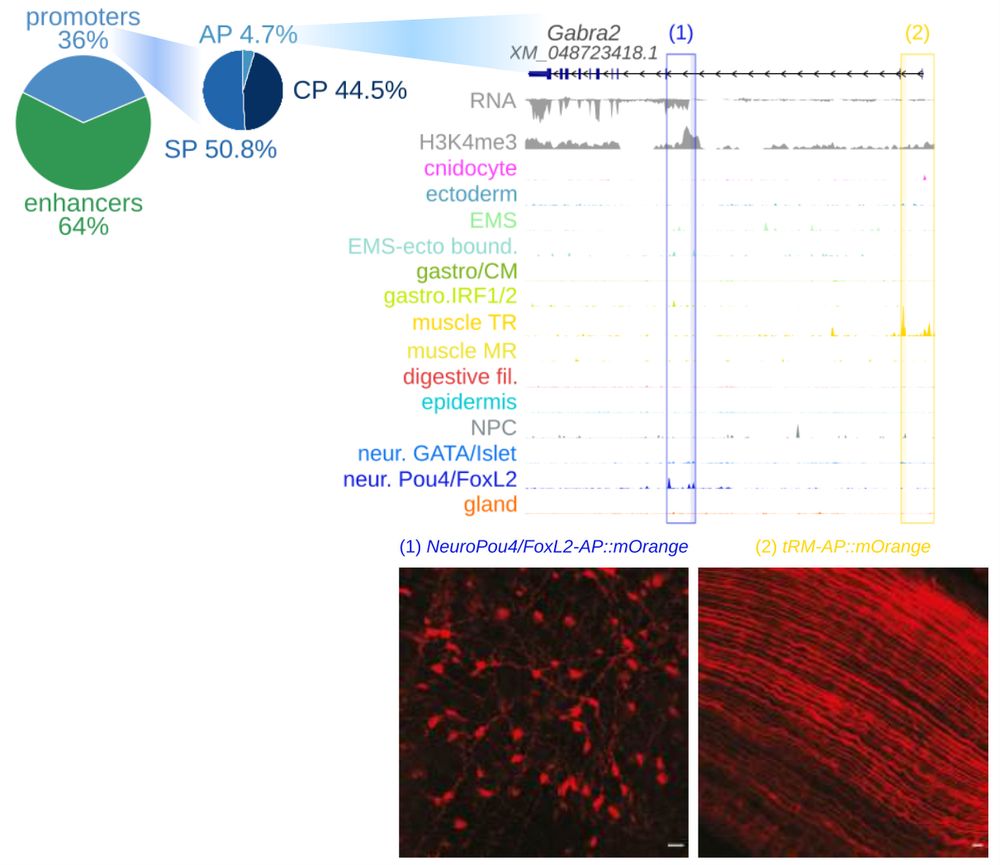
Alternative promoter of Gabra2 in neurons and muscle.
We used the atlas to characterize and quantify candidate CREs, including cell type-specific enhancers, cell type-specific promoters (SP), constitutive promoters (CP) and a smaller number of candidate alternative promoters (AP). We validated muscle and neuron AP of Gabra2 using transgenic reporters.
06.07.2025 18:14 — 👍 1 🔁 0 💬 1 📌 0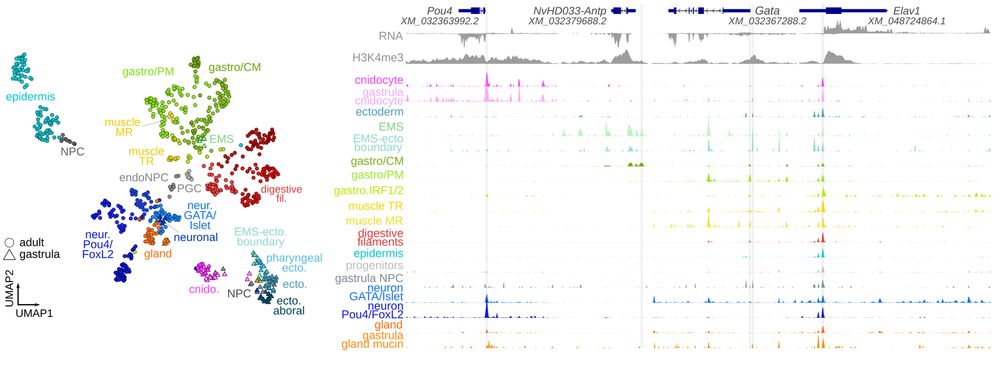
scATAC atlas of Nematostella vectensis.
To start, @martaig.bsky.social produced the first scATAC atlas for a non-model species, profiling 60k cells from adult and gastrula Nematostella vectensis - see it annotated in the app: sebelab.crg.eu/nematostella-cis-regulatory-atlas/ and the genome browser: sebelab.crg.eu/nematostella-cis-reg-jb2
06.07.2025 18:14 — 👍 1 🔁 0 💬 1 📌 0In this project we wanted to extend cell type characterization in early-branching animals from transcriptome-based (scRNA) to regulatory-based definition, by experimentally profiling chromatin accessibility (scATAC) and computationally inferring TF binding to cis-regulatory elements (CREs).
06.07.2025 18:14 — 👍 1 🔁 0 💬 1 📌 0I am very happy to have posted my first bioRxiv preprint. A long time in the making - and still adding a few final touches to it - but we're excited to finally have it out there in the wild:
www.biorxiv.org/content/10.1...
Read below for a few highlights...
Fixed! Thanks for pointing it out
05.07.2025 19:02 — 👍 2 🔁 0 💬 0 📌 0Enhorabuena to my first PhD sibling 🥰
02.07.2025 14:25 — 👍 14 🔁 0 💬 0 📌 0🧬🔍How can enhancers achieve tissue-specific activity?
We use MPRAs of synthetic enhancers to derive interpretable rules on TFBS arrangement 🚦 and discover that negative synergies drive specificity in hematopoiesis 🩸. Shoutout to @Robert Frömel & @larsplus.bsky.social for leading this work 🦹🦸.
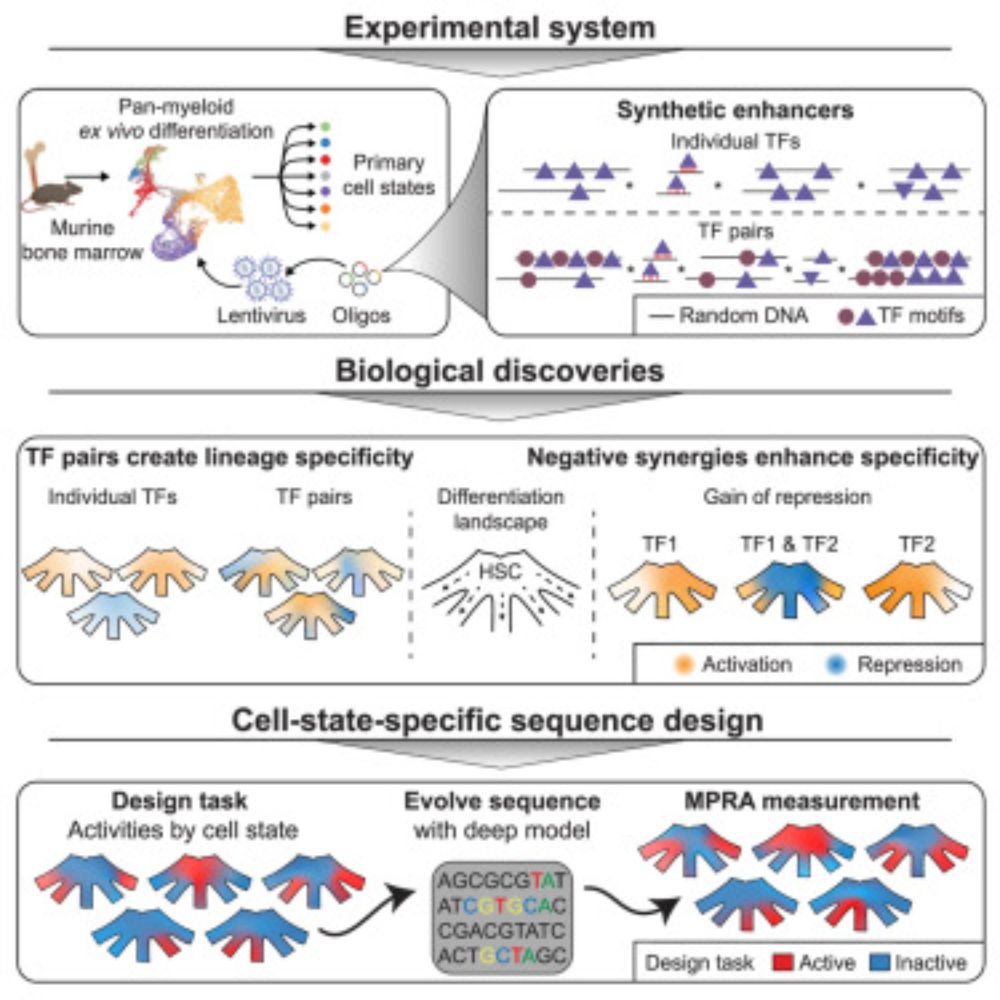
Out in Cell @cp-cell.bsky.social: Design principles of cell-state-specific enhancers in hematopoiesis
🧬🩸 screen of fully synthetic enhancers in blood progenitors
🤖 AI that creates new cell state specific enhancers
🔍 negative synergies between TFs lead to specificity!
www.cell.com/cell/fulltex...
🧵
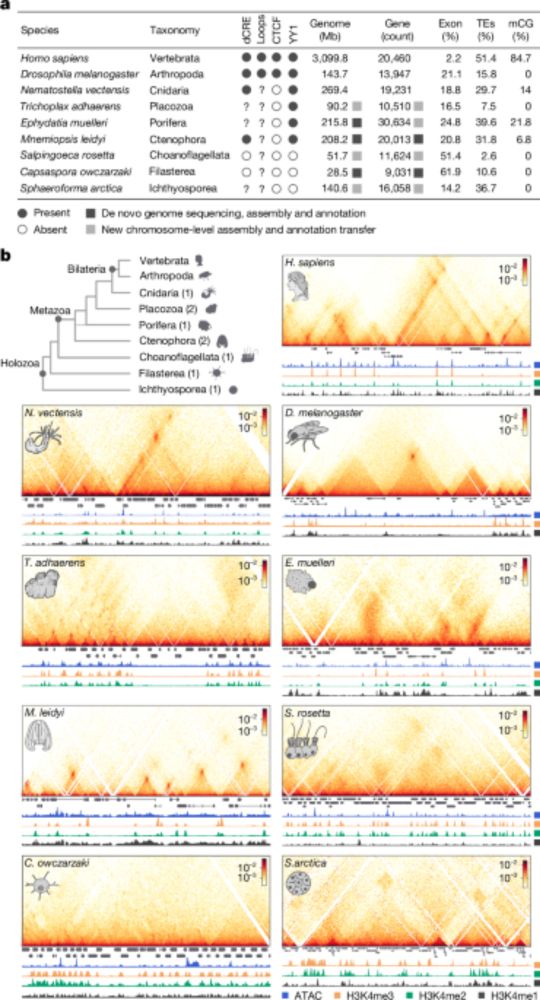
I’m very excited to share our work on the early evolution of animal regulatory genome architecture - the main project of my postdoc, carried out across two wonderful and inspirational labs of @arnausebe.bsky.social and @mamartirenom.bsky.social. www.nature.com/articles/s41...
07.05.2025 15:22 — 👍 263 🔁 112 💬 12 📌 12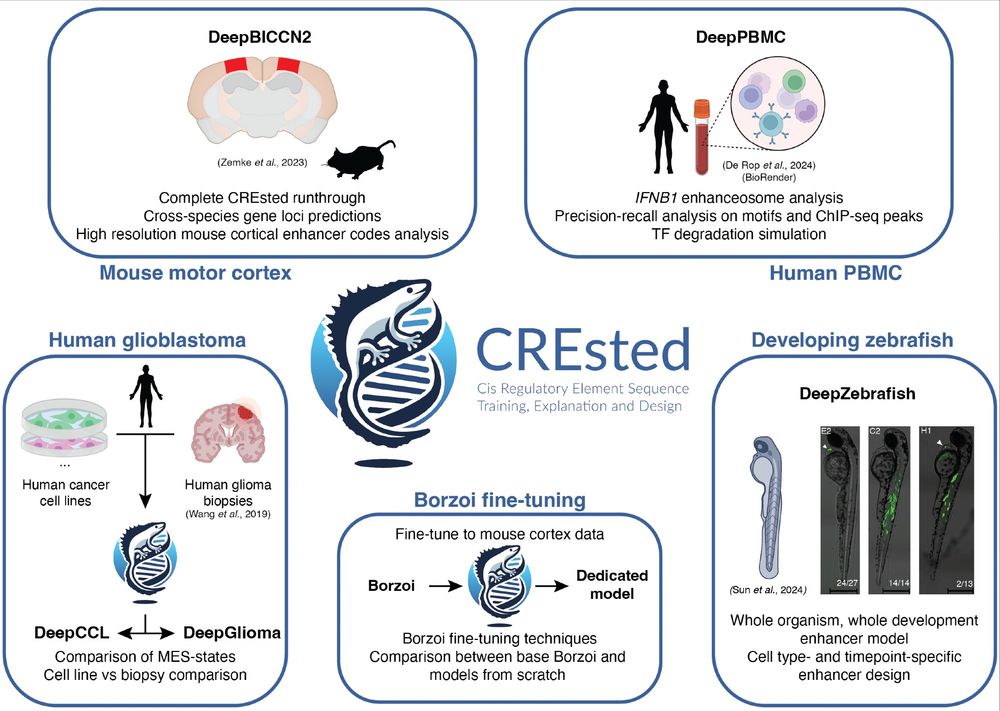
We released our preprint on the CREsted package. CREsted allows for complete modeling of cell type-specific enhancer codes from scATAC-seq data. We demonstrate CREsted’s robust functionality in various species and tissues, and in vivo validate our findings: www.biorxiv.org/content/10.1...
03.04.2025 14:30 — 👍 74 🔁 38 💬 1 📌 5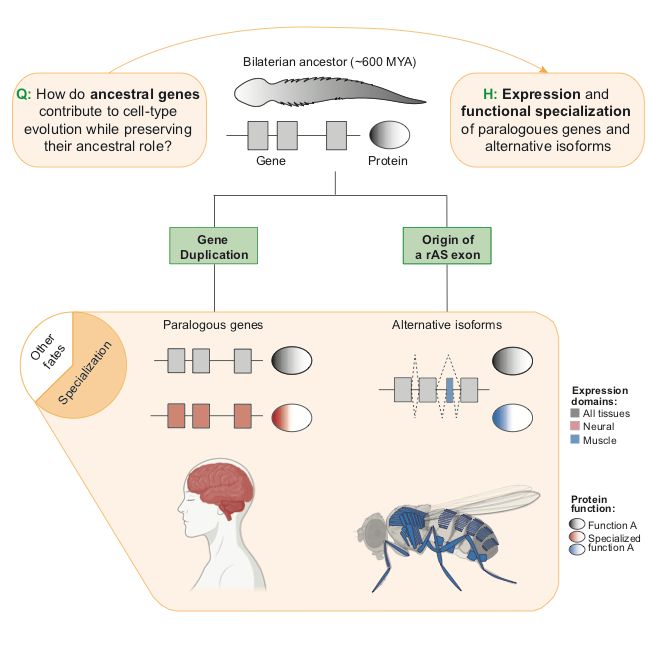
"The main fates after gene duplication are gene loss, redundancy, subfunctionalization and neofunctionalization".
In our new review, @fedemantica.bsky.social and I argue we are missing the most prevalent one: specialization. And the same applies to alternative splicing! 1/7
tinyurl.com/45k7kbmp
New preprint from the @arnausebe.bsky.social lab! 💐
Here @crisnava.bsky.social, @seanamontgomery.bsky.social & collaborators develop a novel ChIPseq protocol, and demonstrate its huge potential to study the evolution of chromatin function and regulation across the eukaryotic tree of life.